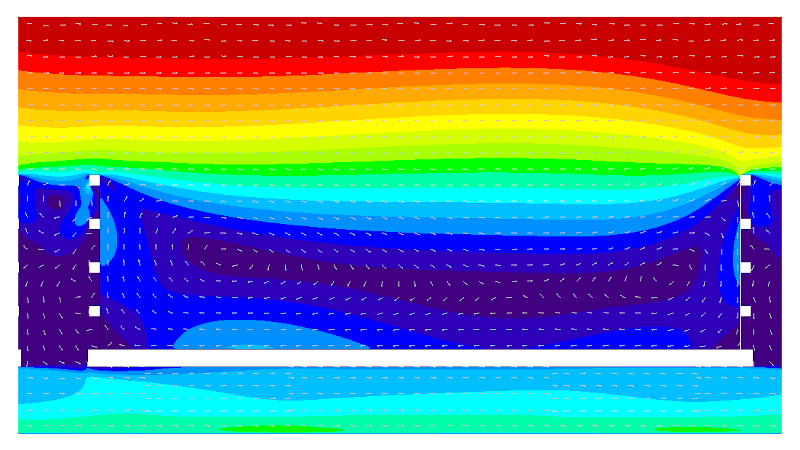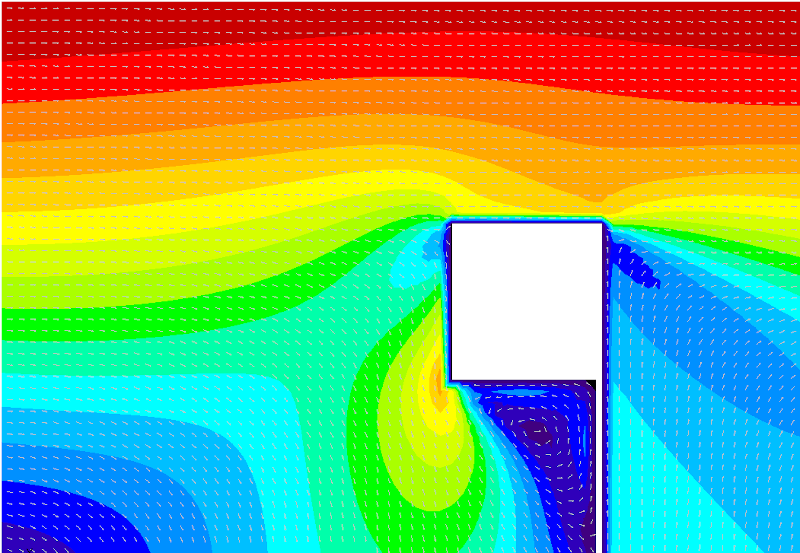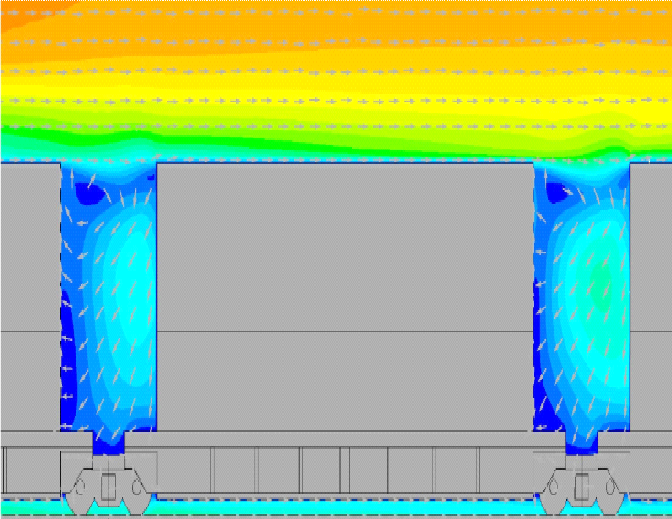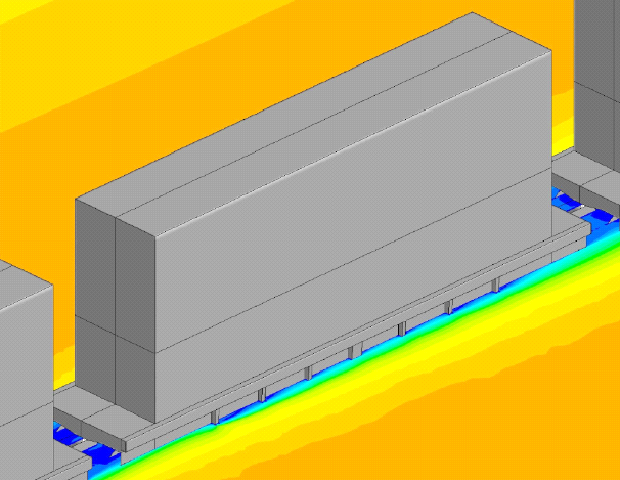Aerodynamic Drag Reduction of Rail Cars Using CFD
Open-top bulk commodity carriers, such as gondola or hopper cars, experience high drag while traveling empty back to the mine. This drag increases fuel usage, resulting in higher operational costs and more greenhouse emissions.
Since the 1970s Airflow Sciences has been studying methods to reduce this drag using engineering analysis, wind tunnel testing, and Computational Fluid Dynamic (CFD) modeling. The shape of the top of the car plays a very important role in how the air enters, swirls, and exits the empty cavity. By calculating the forces exerted on the car and analyzing the leading and trailing edges, the drag of the car can be determined and often straight-forward geometry changes can result in a noticeable reduction of drag. For passenger cars, trains, and trucks, low drag means better fuel economy.
An example of a CFD study of rail cars to reduce aerodynamic drag and improve fuel efficiency was published in the Fall 2020 edition of "The Airflow Update". Also check out ASC's patents for innovative rail car designs and test equipment.
Additional information on reducing drag in the railroad industry can be found in ASC's Blog and our VBlog.
CFD Modeling of Rail Car Aerodynamic Drag




